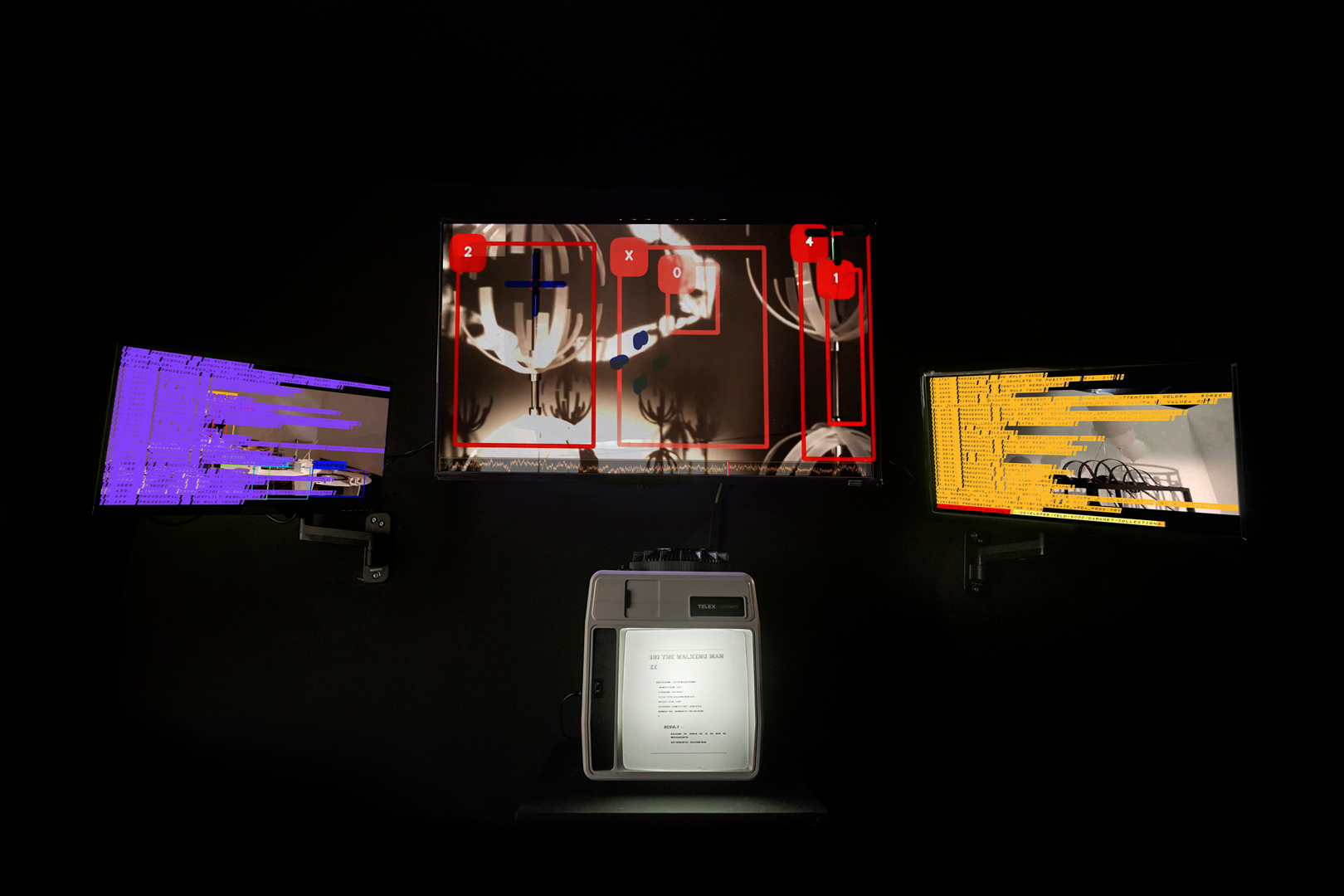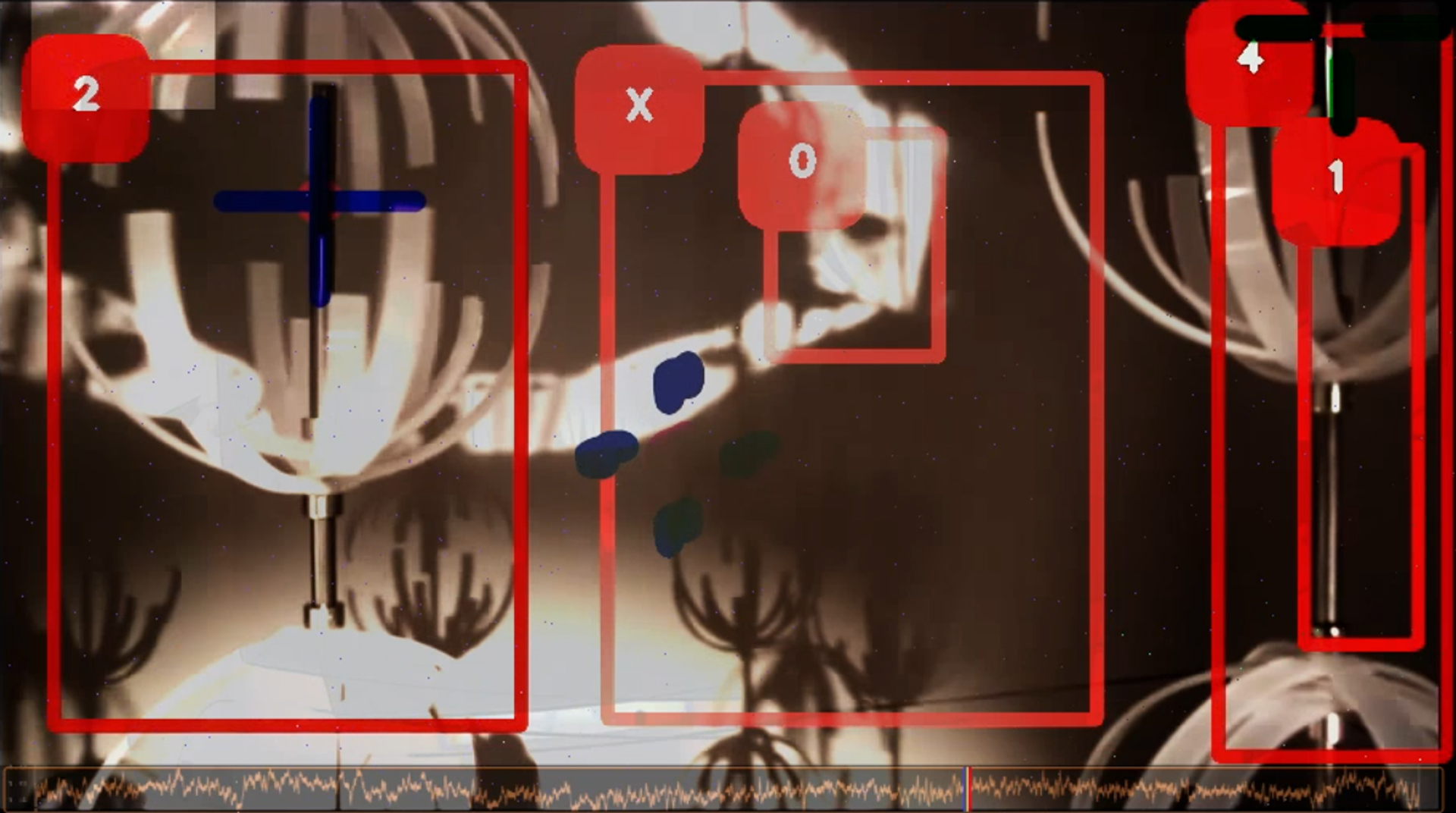Jooyoung Oh: BirthMark: An Artificial Viewer For Appreciation Of Digital Surrogates Of Art
Artist(s):
Title:
- BirthMark: An Artificial Viewer For Appreciation Of Digital Surrogates Of Art
Exhibition:
Category:
Artist Statement:
Summary
The work BirthMark deals with an artificial intelligence (A.I.) that has the capacity of appreciating works of art. BirthMark questions how a computational approach reveals the process of consciousness and to what extent the subjectivity of the “image” is in the boundary of individual experience.
Abstract
BirthMark proposes an artificial intelligence model of an audience to evaluate and anticipate the audience reaction to media art. In BirthMark, human cognitive process of appreciating artwork is defined in three stages: “camouflage,” “solution” and “insight.” In other words, understanding the intention (solution) from hidden images (camouflage) and realizing its meaning (insight). Watching the archive video clips featuring different works by 16 artists, the A.I. in BirthMark tries to appreciate works of art in a similar way to humans. YOLO-9000, an object detection system, tracks objects in the images of the works, while ACT-R, a cognitive architecture designed to mimic the structure of the brain, reads and perceives them. The A.I.’s process of recognizing works is shown in the video and the keywords of the works found in this process appear on a small screen. At the same time, an old slide projector shows what the A.I. understands semantically about the artists’ interpretations of their own work.
The A.I.’s cognitive process seems to be similar to the human act of appreciating art at a glance. But in reality, the keywords that it accurately analyzes from the images are only 2 to 5 out of 300 words. The more abstract the work is, the worse the A.I’s intelligibility gets. As the “birthmark” in a short story of the same title by Nathaniel Hawthorne represents, BirthMark implies that there is a realm of humans that can be hardly explained through scientific methodology.
Since the 1980s, artistic works that make use of electronic media have been subsumed under the term “(new) media art.” Media art is distinct from other types of visual art in that they all have a fundamental aspect in common, their organization in time, and they are referred to as “time-based art.” Encouraging the audience interaction with the production, contemporary media art has new and continuously varying digital forms in which artists can convey their messages. However, the attempt to overcome the formal static installation often ends up in a ‘not-well-functioning-in-real-time’ work. In other cases, artworks are often seen as an eye-catcher with numerous high-end technology and spectacular visual effects. This proposal aims to question the current art scene, specifi-cally those who use the tools of interactivity as their main goal for experiencing the work. BirthMark proposes an artificial intelligence (AI) virtual model that appreciates the interactive media artwork and how well it conveys the artist’s intention. This proposal opens a discussion of whether the aesthetic elements can be broken down into measurable units as an extent to the information theory. It also questions whether the effect of the art can really be simulated by AI. Utilizing the earliest symbolic AI model, known as Adaptive Control of Thought-Rational (ACT-R), this work revisits the attempt to represent the human mind in the physical universe. This proposal reviews a multi-stage experience with AI, assuming the audience mind can be represented as a model. It also assumes that the viewer’s way of appreciating an artwork can be artificially reproduced. Sometimes, the writers’ intentions can interfere with the transmission of the message of the work or cause difficulties in the immersion of aesthetic experience.
Process Information:
The most difficult part of the work was to visualize the AI’s vision and audience’s vision at the same time. I had only conceptual idea of matching Ai and human vision at the same time, then Later, I decided to use eyetracker for and trace the eyegaze and the AI vision at the same time in the video frame.
Other Information:
Inspiration Behind the Project
As a practicing artist and researcher, working on ACT-R artificial user, I had a research motivation on building a cognitive model that simulate visual process of human, further morea model that simulate cognitive process of a man watching movie or artwork. As a result my A.I.’s cognitive process seemed to be similar to the human act of appreciating art at a glance. But in reality, the keywords that it accurately analyzed from the images were only 2 to 5 out of 300 words. The more abstract the work is, the worse the A.I’s intelligibility gets.
This result reminded me of a novel Birthmark, a short story title by Nathaniel Hawthorne, which represents failure of a scientific reasoning. I still believe that there is a realm of humans that can be hardly explained through scientific methodology.






